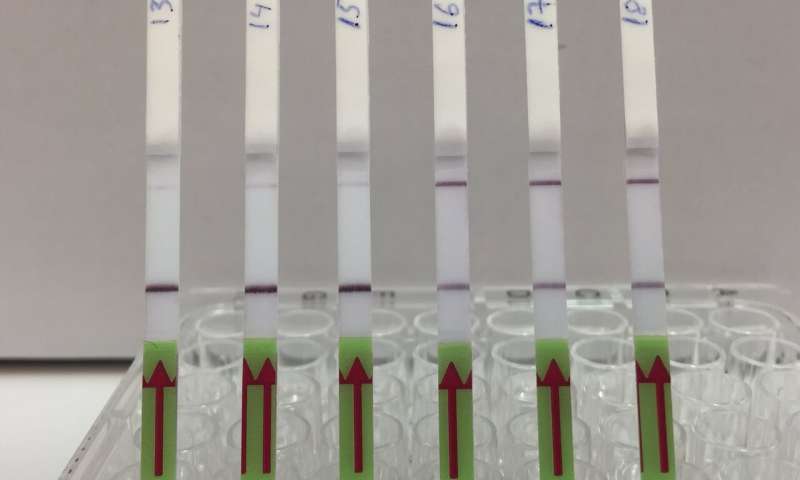New CRISPR Diagnostic Test Developed
In the journal Nature Biomedical Engineering, an international research team reported that to improve diagnostic testing for kidney transplant patients, they have combined the simplicity of urine sampling with the excellent sensing abilities of CRISPR.
Cytomegalovirus (CMV) and BK polyomavirus (BKV), and CXCL9 mRNA, two common opportunistic viruses infecting kidney transplant patients, are screened in the new test.
At Max Delbrück Center for Molecular Medicine in the Helmholtz Association (MDC), Dr. Michael Kaminski, who heads the Kidney Cell Engineering and CRISPR Diagnostics Lab, said, “CRISPR tool has great potential for other applications, especially cheaper and faster diagnostics and not just as a gene-editing tool.”
Critical need
In kidney transplant patients, to reduce the chance of the organ being rejected, they are on medications that can be suppressing their immune systems. The risk of getting sick from infections increases as a result. The patients must be closely monitored for both infection and rejection. This is usually done via kidney biopsies and blood tests, which are expensive, more invasive and time-consuming.
Affordable urine-based diagnostic tests are available for a variety of biomarkers, from pregnancy to diabetes, but, for nucleic acids, they have not been used widely. This is where CRISPR enters
the picture.Very small segments of a DNA or RNA sequence guided by a complimentary piece of RNA can be found using CRISPR technology. It works with certain types of Cas proteins simultaneously, which cut the fluorescent reporter molecule as well as the target sequence. The presence of a target is indicated by this so-called collateral cleavage releasing a fluorescence. Few labs have tested CRISPR’s diagnostic potential on synthetic material in real clinical samples while many labs have been investigating it.
Kaminski said, “Getting down to concentrations that are clinically meaningful is the challenge. It really makes a huge difference if you want to get to the single-molecule level in a patient fluid, versus if you are aiming for a ton of synthetic target in your test tube.”
Positive or negative
A two-step process is used in the test kit, formally called an assay. First, for CRISPR to detect the target even if there is just one target molecule present, the viral target DNA in a urine sample must be amplified—copied enough times. To optimize the process for viral DNA, the team used a specific CRISPR-Cas13 protocol known as SHERLOCK. Similar to a home pregnancy test, the results of this test are conveyed. When a paper strip is dipped in the prepared sample if two lines appear it indicates the presence of a virus, and if only one line appears on the strip, the result is negative.

Confusion could be caused when a pale second line appears on the test strip for very low target concentrations. So, the team developed a smartphone app that renders the final call based on the line’s intensity by unbiasedly analyzing the pictures of the test strip.
For the rejection marker CXCL9, the researchers used a similar process. There, mRNA was amplified after isolating, after which CRISPR-Cas13 mediated target detection.
To analyze more than 100 samples from kidney transplant patients, the researchers used their assay after a lot of work to optimize the technique. The assay correctly detected signs of acute cellular transplant rejection and even with low levels of BKV or CMV infection, the assay was very accurate.
Next steps
Right now, the test requires multiple steps as the samples must be heated for preparation. The test is not quite ready for at-home testing, but it could be used in a hospital setting. Having a one-step process that can quantitatively measure multiple parameters is the ultimate goal. Specific changes against the patient’s individual baselines can be measured this way.
Kaminiski notes that for other organ transplants also CRISPR-based diagnostic approach could potentially be adapted. Even for other immunocompromised people at risk for viral infections, this test could also be useful.
Source
New CRISPR Diagnostic Test Developed



























